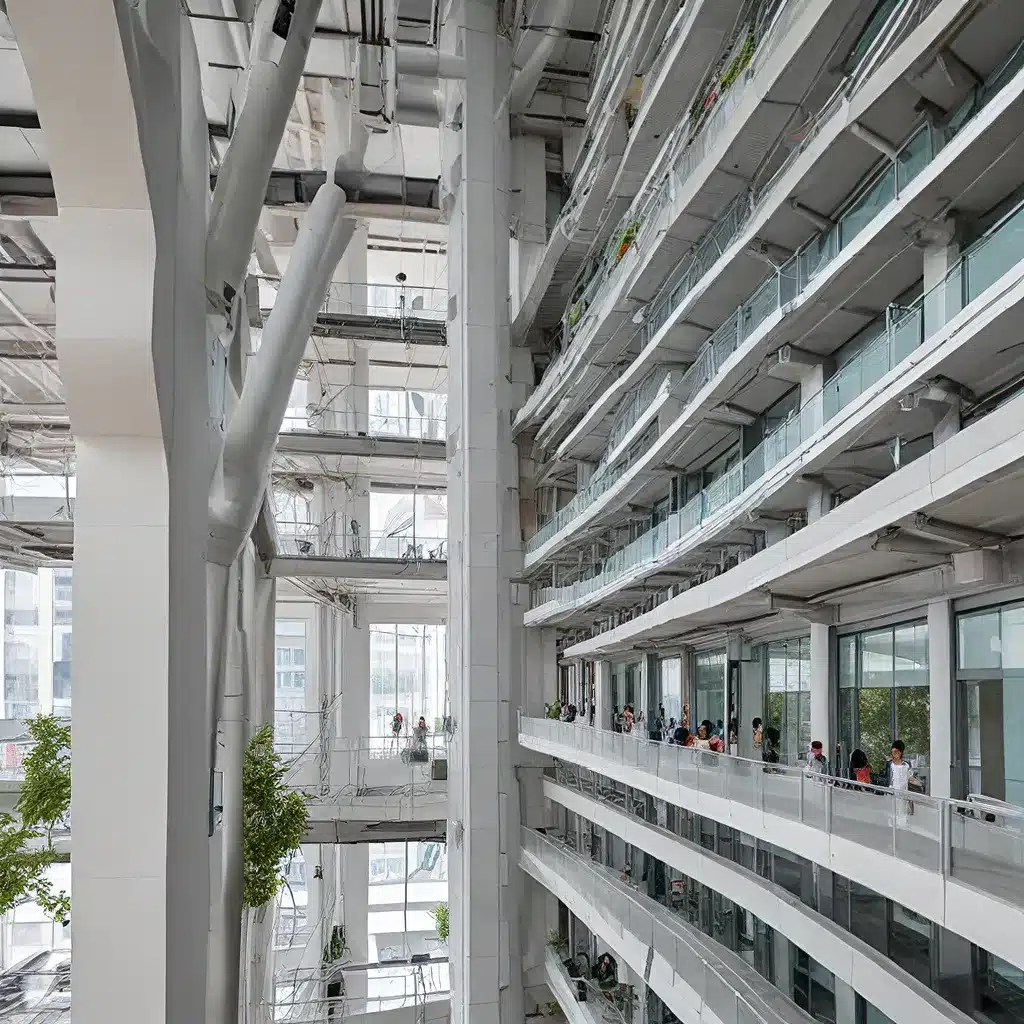
Unlocking the Potential of Sensor Networks in Smart Buildings
The rise of sensor networks and the Internet of Things (IoT) has revolutionized the way we approach building automation and management. By integrating a network of strategically placed sensors, building owners and facility managers can now harness valuable data to optimize energy efficiency, enhance occupant comfort, and improve overall building performance.
One of the key technologies driving this transformation is LoRaWAN (Long Range Wide Area Network), a low-power, wide-area network protocol that enables reliable and cost-effective connectivity for a wide range of sensors and devices within a building. LoRaWAN’s long-range capabilities and low power consumption make it an ideal choice for building intelligence systems, allowing for seamless integration and scalability.
According to a recent study, LoRaWAN technology plays a crucial role in enabling smart and efficient building management by providing a robust connectivity solution for a variety of sensors and devices. These sensors can collect data on various aspects of building operations, including temperature, humidity, occupancy, lighting, energy usage, air quality, and more.
Transforming Building Operations with Sensor Networks
Sensor Connectivity and Integration
LoRaWAN’s ability to connect and monitor a diverse range of sensors and devices is a key advantage for building automation. From smart meters for utility management to environmental sensors for monitoring temperature, humidity, and air quality, LoRaWAN provides a reliable and cost-effective connectivity solution. This data can then be integrated with Building Management Systems (BMS) and centralized control platforms, enabling a holistic view of building operations and data-driven decision-making.
Real-Time Monitoring and Environmental Control
The real-time monitoring capabilities of LoRaWAN-connected sensors are instrumental in maintaining optimal building conditions. Facility managers can access data from sensors distributed throughout the building, allowing them to respond quickly to issues and make informed decisions about heating, ventilation, and air conditioning (HVAC) systems, lighting control, and other building systems.
Sensor-enabled building automation also plays a crucial role in indoor air quality (IAQ) management. LoRaWAN sensors can continuously monitor parameters such as carbon dioxide (CO2) levels, volatile organic compounds (VOCs), and particulate matter, enabling the BMS to adjust ventilation and air filtration in real-time to maintain a healthy indoor environment for occupants.
Energy Efficiency and Cost Savings
One of the primary benefits of sensor-enabled building automation is the potential for significant energy savings. LoRaWAN-connected sensors can measure energy consumption in real-time, providing building managers with the data they need to optimize heating, ventilation, air conditioning (HVAC), and lighting systems for maximum efficiency.
By fine-tuning HVAC operations based on occupancy and environmental conditions, and dynamically adjusting lighting based on occupancy and ambient light levels, building owners can achieve substantial reductions in energy consumption and utility costs. This not only benefits the organization’s bottom line but also contributes to environmental sustainability by reducing the building’s carbon footprint.
Enhancing Occupant Experience and Building Security
Sensor networks in smart buildings go beyond energy management, also improving occupant comfort and experience, as well as enhancing building security.
Occupancy and Space Utilization
LoRaWAN sensors can detect occupancy in different areas of a building, providing valuable insights into space utilization and occupancy patterns. This information can be used to control lighting, HVAC systems, and access control, ensuring that building resources are utilized efficiently.
For example, lights can be automatically turned off in unoccupied rooms, and HVAC systems can adjust based on the number of occupants, creating a more comfortable environment while reducing energy consumption.
Building Security and Access Control
LoRaWAN-enabled sensors can also play a crucial role in building security. Sensors monitoring doors, windows, and motion can detect unauthorized access and send real-time alerts to security personnel, enhancing the overall safety and security of the building.
Additionally, LoRaWAN technology can be used to create indoor navigation and wayfinding solutions, making it easier for visitors and occupants to find their way in large buildings, particularly during emergencies or unusual situations.
Predictive Maintenance and Data-Driven Decisions
Sensor networks in smart buildings don’t just provide real-time monitoring and control – they also enable predictive maintenance and data-driven decision-making.
Predictive Maintenance
LoRaWAN-enabled sensors can monitor the condition of building equipment and infrastructure, such as elevators, escalators, and HVAC systems. By analyzing sensor data, facility managers can identify potential issues before they become critical, allowing them to schedule maintenance or repairs proactively, reducing downtime and costly reactive repairs.
Data Analytics and Reporting
The wealth of data collected by LoRaWAN sensors can be analyzed to identify trends, patterns, and anomalies. Building managers can leverage this data to make informed decisions about optimizing building operations, improving energy efficiency, and enhancing occupant comfort and experience.
This data-driven approach to building management not only increases efficiency but also provides valuable insights that can be used to continuously improve the building’s performance over time.
The Future of Sensor-Enabled Building Automation
As the Internet of Things (IoT) and sensor network technologies continue to evolve, the potential for transformative building automation solutions is steadily growing. LoRaWAN, with its long-range, low-power, and cost-effective characteristics, is poised to play an increasingly prominent role in the smart building ecosystem.
Looking ahead, we can expect to see deeper integration between sensor networks, building management systems (BMS), and intelligent control platforms. This convergence will enable even more sophisticated automation, optimization, and predictive maintenance capabilities, ultimately enhancing energy efficiency, occupant comfort, and overall building performance.
Moreover, the flexibility and scalability of LoRaWAN-based sensor networks will allow building owners and facility managers to adapt to evolving needs and emerging technologies with greater ease, ensuring that their buildings remain future-proof and responsive to the changing demands of occupants and the environment.
In conclusion, the integration of sensor networks and LoRaWAN technology in building automation is a transformative development that is redefining the way we approach building management. By harnessing the power of data-driven insights and intelligent control, building owners and facility managers can optimize energy efficiency, enhance occupant comfort, and drive sustainable operations – ultimately positioning their buildings for long-term success in the era of smart infrastructure.